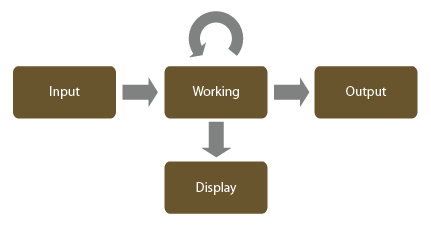Colour Management Workflow
Colour management involves converting colour values between colour spaces. This conversion happens at specific points along a colour pipeline.

- When importing media, colour values must be converted to a common working space so that colour information can be properly combined with other sources. For example, to combine on-set footage with 3D CG rendered elements and a painted matte background, the images should be in the same colour space. If the images originated in different colour spaces, they require different input transforms to convert them to a common working space.
- While working, colour values in your current working space must be converted to a colour space that is appropriate for your system's monitor. For example, if you are working in a scene-linear colour space, then you need to apply a transform that tone-maps the images and converts them to values that are appropriate for your display. This display transform is not baked into the underlying colour values, but is only applied on-the-fly for previewing.
- Also while working, you may want to switch colour spaces to perform specific operations. For example, some operations like compositing and blurring work best in a scene-linear space, but other operations like noise and grain operations, or tracking and stabilization, work best in a video or log space. When performing conversions like these, it's best to use an invertible transform to preserve the original colour information.
- Finally when outputting, you need to convert colours from your working space to the colour space that is appropriate for your deliverables. For example, SD video, HD video, and digital cinema all use different colour spaces, and require different output transforms.
All media in the application is now tagged with a colour space identifier to help deal with the proliferation of colour encodings used by the increasing variety of capture and display devices. Tagging your media correctly is central to using the colour management features.
Deciding whether to convert media on import
When importing media you may either convert it to a working space or leave it in its original colour space. Each approach has its advantages. If media will be used for extensive compositing in Batch and Action, it is usually best to convert to a common scene-linear working space. In other cases, it may be more convenient to leave it as is (and just tag it appropriately), for example if you have a reference track from offline editorial.
The key concept to realize is that because all media is tagged with a colour space, it is possible to easily work with material in a variety of colour spaces side by side.
See also: Applying Colour Management on Import.
